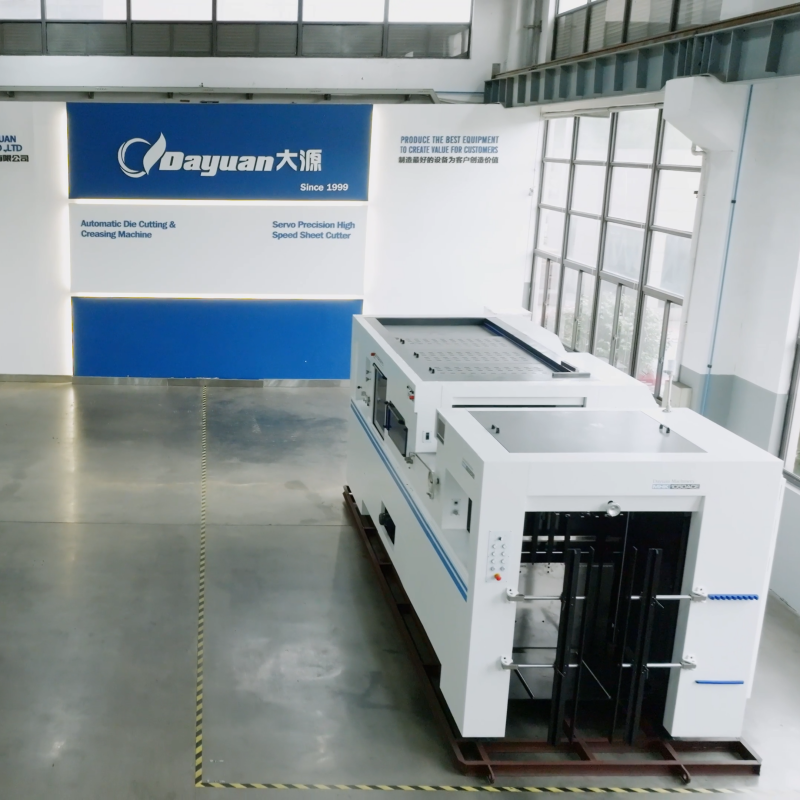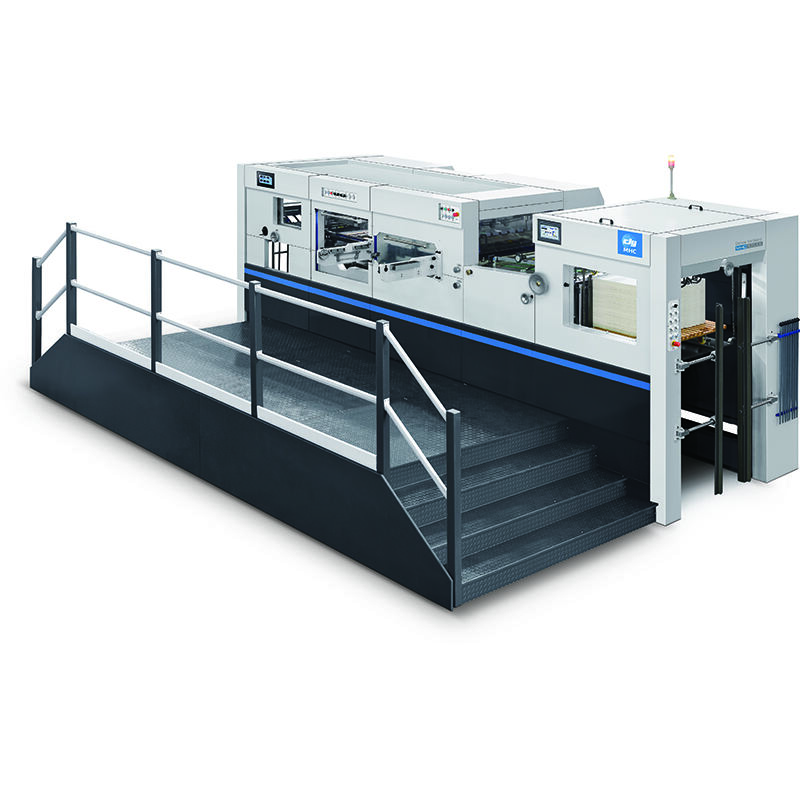Die Cutting Machine Safety: Operator Training Requirements
The die cutting process is widely used across industries such as packaging, printing, textiles, automotive, and electronics. A Die Cutting Machine is a powerful tool that uses sharp dies to cut materials into specific shapes with precision and efficiency. However, like any industrial machinery, it poses certain risks if not used correctly.
Proper operator training is the foundation of safe Die Cutting Machine operation. This article outlines the safety considerations, operator responsibilities, and training requirements to ensure compliance, prevent accidents, and promote a culture of workplace safety.
Understanding the Die Cutting Machine
A Die Cutting Machine applies pressure to a cutting die to cut, shape, or emboss materials. Depending on the design, it may be manual, semi-automatic, or fully automated. Common machine types include:
-
Flatbed Die Cutting Machine – Uses a flat surface and a die to cut materials in a stamping action.
-
Rotary Die Cutting Machine – Uses cylindrical dies for continuous cutting, ideal for high-speed production.
-
Digital Die Cutting Machine – Uses computerized blades or lasers, often without physical dies, for flexible and precise cutting.
Each type has unique operational hazards, but all share common safety requirements.
Potential Hazards in Die Cutting Operations
Without proper training, operators may be exposed to:
-
Pinch Points – Areas where moving parts can trap fingers or hands.
-
Sharp Dies – Blades that can cause cuts or lacerations.
-
High Pressure – The pressing force of the Die Cutting Machine can crush materials — and injure operators.
-
Ejection Hazards – Misaligned materials or faulty dies can eject debris.
-
Noise and Vibration – Prolonged exposure can affect hearing and cause fatigue.
-
Electrical Risks – Faulty wiring or improper maintenance can lead to electrical shocks.
Operator training helps minimize these risks by instilling safe work habits and hazard awareness.
Why Operator Training Is Critical
Legal and Regulatory Compliance
Many jurisdictions require documented safety training for operators of industrial machinery, including Die Cutting Machines. Compliance ensures that the business avoids fines and meets workplace safety standards.
Accident Prevention
A well-trained operator understands potential hazards and how to prevent them, reducing workplace injuries and downtime.
Improved Efficiency
Trained operators work more confidently and efficiently, producing better quality work while maintaining safety.
Reduced Equipment Damage
Proper handling reduces wear and tear, preventing costly repairs and extending the machine’s lifespan.

Core Topics in Die Cutting Machine Operator Training
1. Machine Familiarization
Operators must learn:
-
The purpose and capabilities of the specific Die Cutting Machine model.
-
Component identification: dies, platen, feed rollers, safety guards, and control panels.
-
Basic troubleshooting for common operational issues.
2. Safety Procedures
Training must cover:
-
Recognizing and avoiding pinch points.
-
Correct handling and storage of dies.
-
Lockout/tagout procedures during maintenance.
-
Personal protective equipment (PPE) requirements such as gloves, safety glasses, and hearing protection.
3. Start-Up and Shutdown Procedures
-
How to perform a pre-operation inspection (checking guards, emergency stops, and electrical connections).
-
Safe powering on and off sequences.
-
Correct setup for dies and materials.
4. Operating Techniques
-
Proper material feeding to avoid jams or misalignment.
-
Adjusting machine settings for different materials.
-
Monitoring cutting quality and making necessary adjustments.
5. Emergency Protocols
-
Locating and using emergency stop buttons.
-
Responding to mechanical failures or power outages.
-
First-aid steps for common injuries.
6. Maintenance Awareness
While operators may not perform all maintenance tasks, they should understand basic upkeep:
-
Cleaning debris from the cutting area.
-
Reporting worn or damaged dies.
-
Lubrication schedules and safe handling of maintenance tools.
Training Delivery Methods
Training can be delivered through:
-
Classroom Instruction – Covers theory, safety regulations, and hazard awareness.
-
Hands-On Demonstrations – Shows correct operating techniques and safety procedures directly on the Die Cutting Machine.
-
Simulation and E-Learning – Virtual tools for reinforcing skills without risk.
-
Mentorship Programs – Pairing new operators with experienced trainers for supervised learning.
Frequency of Training
-
Initial Training – Before an operator is allowed to work independently.
-
Refresher Training – At least annually or as required by safety regulations.
-
Post-Incident Training – Following any accident or near-miss to address safety gaps.
-
When Equipment Changes – Anytime the machine or its operating procedures are significantly altered.
Assessing Operator Competency
Training should be followed by an evaluation to ensure the operator can:
-
Identify machine parts and safety features.
-
Demonstrate correct start-up, operation, and shutdown.
-
Respond appropriately to emergencies.
-
Apply hazard recognition and risk control measures.
Safety Culture and Management’s Role
Even with comprehensive training, ongoing management commitment is essential:
-
Supervisors should perform regular safety audits.
-
Management should encourage reporting of hazards without fear of reprisal.
-
A continuous improvement approach should be taken, updating procedures as new risks are identified.
Integration with Workplace Safety Programs
Training for Die Cutting Machine operators should be integrated with broader workplace safety initiatives:
-
Compliance with ISO safety standards or OSHA regulations.
-
Alignment with company-specific safety policies.
-
Cross-training to ensure multiple employees can operate the machine safely.
Conclusion
A Die Cutting Machine is an essential tool in many industries, but it can also be dangerous if operated without proper training. Comprehensive operator training not only ensures compliance with regulations but also prevents injuries, improves efficiency, and extends equipment life. By covering machine operation, safety procedures, emergency responses, and maintenance awareness, businesses can create a safer, more productive workplace.
In addition, effective training should be viewed not as a one-time task but as an ongoing process. Safety standards, machine technologies, and industry regulations are constantly evolving. This means that operators need periodic updates to stay current with best practices. Companies that make safety training a continuous priority often see benefits beyond compliance — they enjoy higher worker morale, lower turnover rates, and better overall productivity.
Another important point is that safety training should be tailored to the specific model and type of Die Cutting Machine in use. Generic safety sessions are useful, but they cannot replace detailed instruction on the unique features, operating modes, and hazards of a particular machine. A customized approach ensures that operators can confidently apply the exact procedures required for their daily tasks.
Finally, fostering a culture where safety is openly discussed and supported at all levels — from management to entry-level operators — helps ensure that the lessons learned in training are applied consistently on the shop floor. When everyone understands that safety and efficiency go hand in hand, the Die Cutting Machine becomes not only a powerful production tool but also a reliable and secure part of the manufacturing process.
FAQ
What PPE should be worn when operating a Die Cutting Machine?
Operators should wear safety glasses, gloves suited to material handling, and hearing protection if noise levels are high.
How often should Die Cutting Machine operators be retrained?
Refresher training is recommended at least annually, or whenever new risks, equipment changes, or incidents occur.
Can a new employee operate a Die Cutting Machine immediately?
No. They must first complete full safety and operational training under supervision before independent use.
What is the most common injury from a Die Cutting Machine?
Lacerations and crush injuries are the most common, often caused by improper handling of dies or bypassing safety guards.
Are lockout/tagout procedures necessary for Die Cutting Machines?
Yes. They are essential during maintenance or cleaning to prevent accidental start-up and serious injury.
Table of Contents
- Die Cutting Machine Safety: Operator Training Requirements
- Understanding the Die Cutting Machine
- Potential Hazards in Die Cutting Operations
- Why Operator Training Is Critical
- Core Topics in Die Cutting Machine Operator Training
- Training Delivery Methods
- Frequency of Training
- Assessing Operator Competency
- Safety Culture and Management’s Role
- Integration with Workplace Safety Programs
- Conclusion
-
FAQ
- What PPE should be worn when operating a Die Cutting Machine?
- How often should Die Cutting Machine operators be retrained?
- Can a new employee operate a Die Cutting Machine immediately?
- What is the most common injury from a Die Cutting Machine?
- Are lockout/tagout procedures necessary for Die Cutting Machines?

